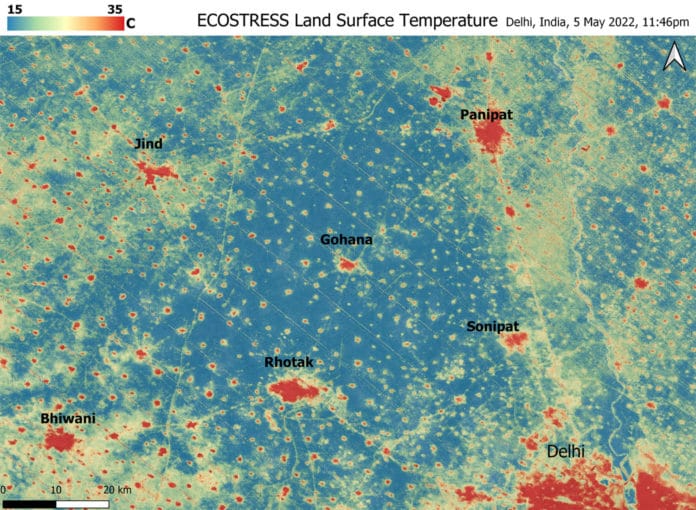India has been dealing with an unusually early heat wave for months. This heat wave has caused dozens of deaths, fires, increased air pollution, and reduced crop yield. And according to weather forecasts, there is no prospect of relief anytime soon.
NASA‘s Ecosystem Spaceborne Thermal Radiometer Experiment on Space Station instrument (ECOSTRESS) documents extreme temperatures in urban areas around Delhi, India- during the historic heat wave. The instrument has also measured these extreme temperatures from space at the highest spatial resolution of any satellite instrument.
The ECOSTRESS has captured an image shortly before local midnight on May 5- showing urban areas and agricultural lands northwest of Delhi, home to about 28 million people. The image covers approximately 4,800 square miles (12,350 square kilometers).
Images from ECOSTRESS serve as a powerful tool for understanding aspects of weather events that traditional observation networks might overlook.
Human activity and the materials utilized in the built environment cause cities to be significantly warmer than the surrounding countryside. These urban “heat islands” are vividly defined in the photograph. Temperatures in Delhi and numerous smaller villages exceeded 95 degrees Fahrenheit (35 degrees Celsius) at night, culminating at roughly 102 degrees Fahrenheit (39 degrees C), while agricultural fields adjacent dropped to around 60 degrees Fahrenheit (15 degrees C). According to this data, city dwellers are experiencing significantly higher temperatures than the average temperatures reported for their localities.
Launched in 2018, the instrument measured the temperature of the ground itself. Like this heat wave, it also recorded other heat-related phenomena.
